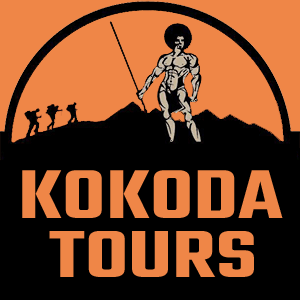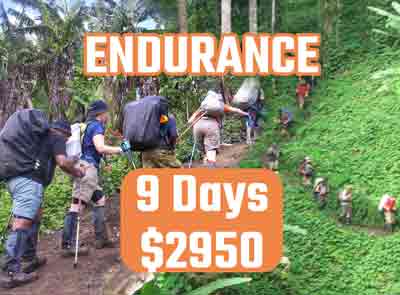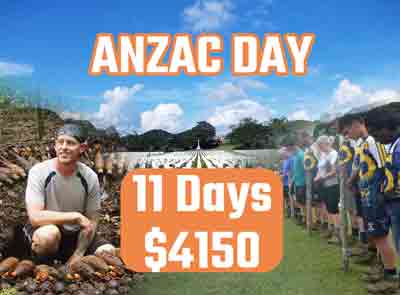The Battle for Isurava by David W. Cameron : Fighting in the Clouds of the Owen Stanley
Introduction
In the annals of Australian military history, the Kokoda Campaign stands out as a testament to courage, sacrifice, and resilience. Among the numerous accounts chronicling this arduous journey, one book, in particular, captures the essence of the defining battle at Isurava. Written by David W. Cameron, “The Battle for Isurava” delves into the clouds of the Owen Stanley Range, exploring the relentless fighting in the jungles of the Owen Stanley in 1942.
Cameron’s Perspective on Isurava
Position at Isurava
As Cameron meticulously recounts, the Battle for Isurava would be the defining battle of the Kokoda Campaign. The Australian 39th Battalion found themselves in a pivotal position at Isurava, setting the stage for a month-long fighting withdrawal towards Ioribaiwa Ridge.
Fighting in the Clouds
The clouds of the Owen Stanley Range served as both a natural barrier and a haunting backdrop to the ferocious clashes that unfolded. Cameron vividly captures the challenges faced by the weary men as they fought valiantly in the clouds, marking Isurava as a place where the elements were as formidable as the enemy.
Victoria Cross in the Pacific War
Heroism at Isurava
One of the notable aspects highlighted by Cameron is the heroism displayed by the Australian militiamen, particularly the 39th Battalion. Within 24 hours of intense combat, Isurava witnessed a series of ferocious attacks by the Japanese against the Australian perimeter. The first Victoria Cross in the Pacific War was rightfully awarded for the valiant efforts in saving the situation.
Sacrifice for Time
Cameron underscores how the sacrifice made by the Australian 25th Brigade at Isurava provided crucial time for the larger Australian forces. This sacrifice became a pivotal moment, akin to Australia’s Thermopylae, where a small militia force held the line against a formidable enemy.
Cameron’s Expertise and Contribution
Author’s Background
David W. Cameron’s authority on the subject is unquestionable. With a background in Australian military and convict history, Cameron holds a first-class honours degree in prehistoric archaeology from the University of Sydney. His expertise extends to palaeoanthropology, and he has written several books on Australian military history, contributing to various journals and book chapters.
Award-Winning Author
Cameron’s dedication to preserving the memory of the Kokoda Campaign is evident in his meticulous research and scholarly pursuits. As an ARC QEII Fellow, he has participated in numerous conferences and museum studies, enriching our understanding of human and primate evolution, particularly in the context of warfare.
Conclusion
“The Battle for Isurava” by David W. Cameron is not merely a historical account but a poignant narrative that brings to life the sacrifices and heroism witnessed in the jungles of the Owen Stanley Range. As prospective trekkers preparing for a journey along the Kokoda Track, delving into Cameron’s work is not just an exploration of history but a tribute to the indomitable spirit of those who fought in the defining battle of the Kokoda Campaign. Cameron’s vivid storytelling and comprehensive research make this book an invaluable resource for anyone seeking to grasp the magnitude of the challenges faced during this critical chapter of the Second World War.
FAQ’s
Q: What is the focus of the book “The Battle for Isurava by David W. Cameron?”
A: The book mainly focuses on the fighting in the clouds of the Owen Stanley in 1942 during the Kokoda campaign, a crucial part of Australian military history.
Q: Who is the author of the book “The Battle for Isurava”?
A: The author of the book is David W. Cameron.
Q: What are the product details of the book “The Battle for Isurava”?
A: The product details of the book can be found on the official publisher page, including information about the audiobook version, battles for Kokoda plateau, retaking Kokoda, and resources and downloads.
Q: What were the significant battles for the Kokoda plateau during the events described in the book?
A: The book covers the battles for the Kokoda plateau that occurred during the intense fighting at Isurava and the subsequent withdraw towards Ioribaiwa Ridge in 1942.
Q: How long did the fierce fighting at Isurava and the withdraw towards Ioribaiwa Ridge last?
A: The weary men endured a month-long fighting withdraw towards Ioribaiwa Ridge just north of Port Moresby in the Owen Stanley range.
Q: Where can I find the audiobook version of “The Battle for Isurava”?
A: The audiobook version of the book is available on the official publisher page.
Q: What was the historical significance of the events described in “The Battle for Isurava”?
A: The events described in the book are significant as they played a crucial role in the Kokoda campaign and have been rightfully awarded as one of Australia’s pivotal moments in military history.
Q: What resources and downloads are available for “The Battle for Isurava”?
A: You can find various resources and downloads related to the book on the official publisher page, including terms and conditions and a free ebook offer for new readers.
Q: What was the environment like in the Owen Stanley during the events covered in “The Battle for Isurava”?
A: The book describes the treacherous jungles of the Owen Stanley where the 39th Battalion and Australian militiamen fought fiercely to survive the harsh conditions.
Q: What was the significance of Isurava during the events of the book?
A: Isurava was described as Australia’s Thermopylae, a place where the Australian forces held the line against ferocious Japanese attacks, reminiscent of the historic battle in ancient Greece.
Q: What is the book “The Battle for Isurava by David W. Cameron” about?
A: The book is about the fighting in the clouds of the Owen Stanley during the Kokoda campaign in 1942, specifically focusing on the battles for the Kokoda plateau and the retaking of Kokoda by Australian militiamen.
Q: What are the significant events mentioned in the book?
A: The book covers the battles in the jungles of the Owen Stanley, the 39th Battalion’s arrival within 24 hours, and the withdrawal towards Ioribaiwa during the mid-August of 1942.
Q: What is the historical relevance of the Owen Stanley 1942 in military history?
A: It marks the beginning of a month-long fighting withdrawal towards Ioribaiwa by weary Australian troops in the Pacific War. The sacrifices made by these troops provided time for reinforcements to arrive.
Q: How is the terrain described in the book?
A: The book describes the challenging terrain of the Owen Stanley Range and the difficulties faced by the soldiers trying to survive in the jungles of the Owen Stanley.
Q: What are some key details about the battles for Port Moresby mentioned in the text?
A: The book details the Japanese conducting several ferocious attacks against the Australian perimeter north of Port Moresby during the Pacific War.
Q: What are some personal experiences mentioned in the book?
A: The book includes accounts of weary men enduring a month-long fighting, having to bury their dead in the ground, and the struggle of the soldiers trying to survive with torn shirts and damaged feet.
Q: Who is the author of the book “The Battle for Isurava”?
A: The author is David W. Cameron, who provides a detailed account of the battles and events in the Owen Stanley in 1942.
Q: Are there any additional resources related to the book?
A: Yes, the book offers a free ebook to new readers and provides further reading recommendations for those interested in military history and the battles of the Owen Stanley.
Q: What can readers expect from the book’s narrative style?
A: Readers can expect to delve into the depths of the Pacific War through the author’s use of diaries and personal accounts, offering an immersive exploration of historical events.
Q: What is the significance of the Australian 39th Battalion in the book?
A: The 39th Battalion’s arrival within 24 hours proves to be a pivotal moment in the battles for the Owen Stanley and is a key highlight in the book.




